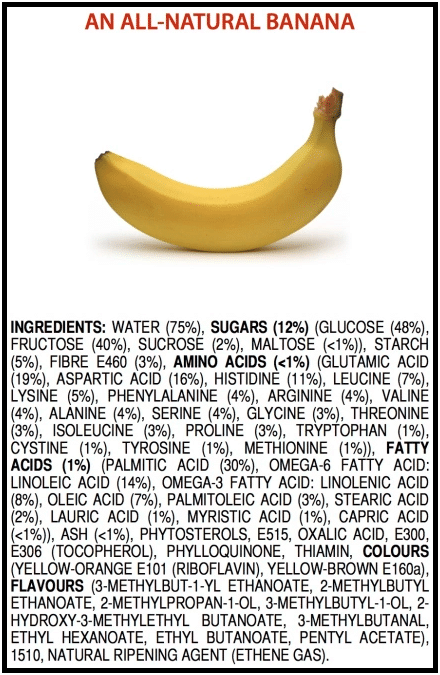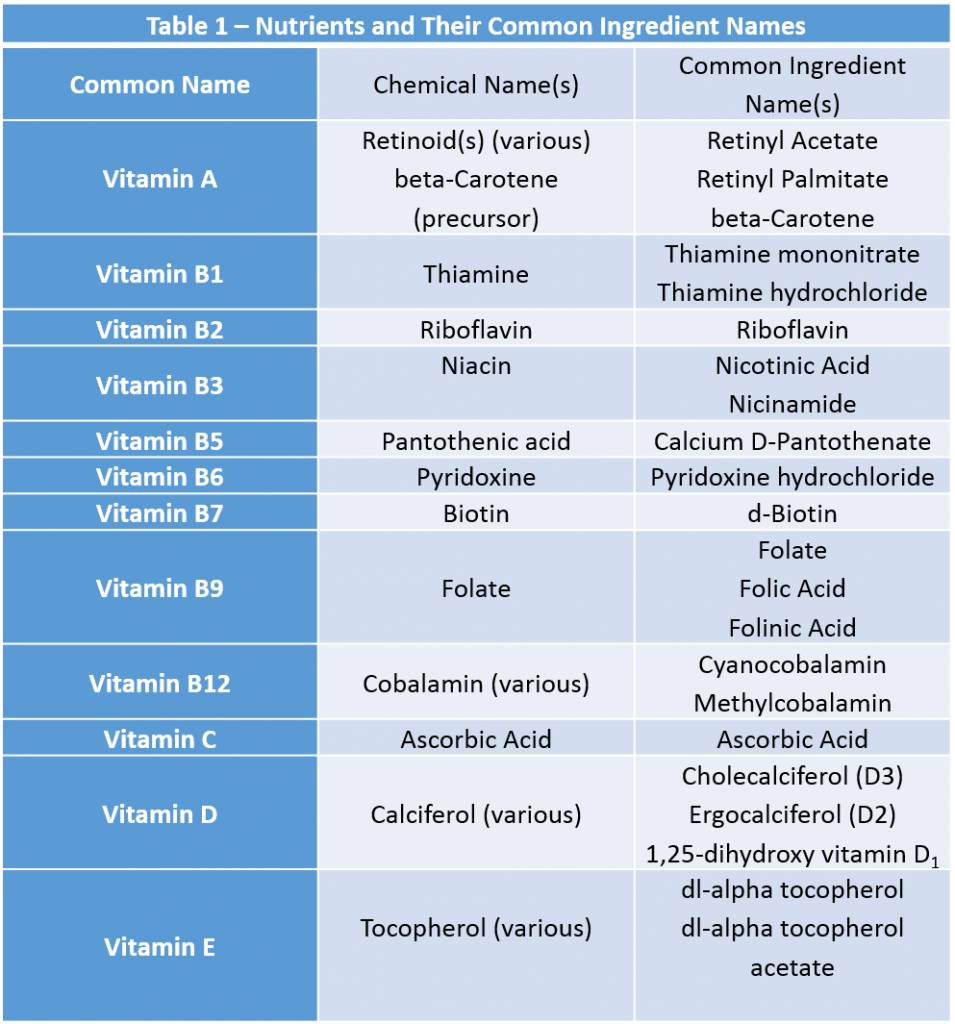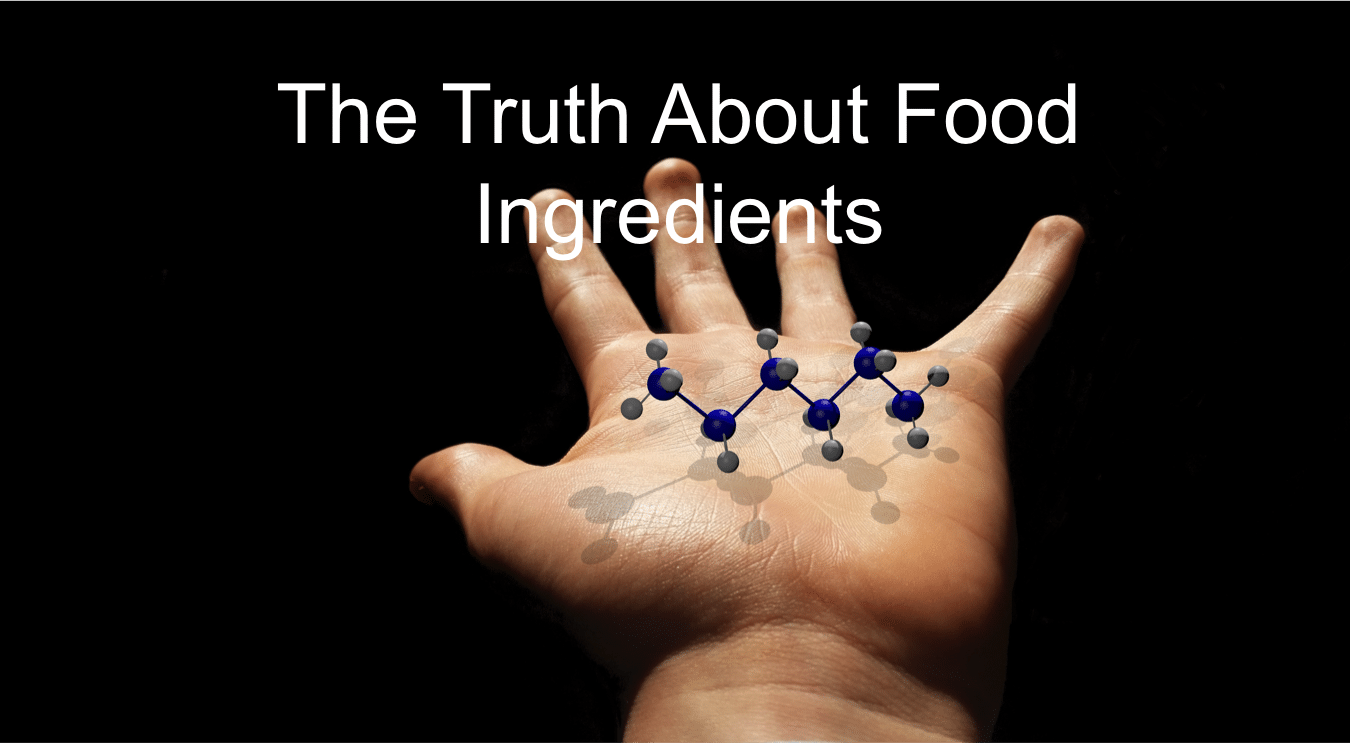Author: Savannah Glasgow
tl;dr Your linguistic level shouldn’t dictate your diet: take the time to learn what complicated-sounding ingredients are before completely writing them off; you may find you want to keep them around.
Introduction
If you can’t pronounce an ingredient, then you shouldn’t eat it, right? Unfortunately, it appears that idea may not be the best advice nor very accurate. While the idea is good in theory and well-motivated (anything aimed at making people healthier is well-motivated in my opinion), it paints too simple a picture. Instead, we could benefit more from a better understanding of food chemicals and what they actually mean.
There are a lot of big words on ingredients lists that sound complicated or even dangerous, yet they are oh so important and flat out beneficial. Just because you don’t know what an ingredient is (yet!) doesn’t mean you should avoid it like the plague. Your linguistic level shouldn’t dictate your diet.
I find this mindset of “avoid the complicated things” misses the mark for several reasons. Let me highlight why it misses the mark with a couple examples
Example 1
Friend 1: Where are you going on your vacation?
Friend 2: We’re going to Svalbarðsstrandarhreppur!
Friend 1: Woah, I don’t know where or what that is, you don’t want to go there…

Example 2
2nd Grade Teacher: What do you want be when you grow up?
Student: I want to be a psychoneuroendocrinologist!
Teacher: …Mmmm no, that sounds too complicated, how about just a doctor instead?
Yes, these examples are hyperboles, but do you see how strange this mindset sounds?
The idea of “if you can’t pronounce it, don’t eat it” makes a false assumption: it equates simple to “good” and complex to “bad”. Most of the best things in life are never so neat and tidy and clear-cut.
On a deeper level, I find this mindset deters you from learning “how to pronounce a word you don’t know” which, in this context, really means not taking a couple minutes to learn what the multisyllabic ingredient actually is. Thankfully, most of us have smartphones handy 24/7. Siri and Cortana are just sitting in your pockets, waiting to drop knowledge bombs on you.
In response to this weird dietary ideology, Australian chemistry teacher James Kennedy decided to “demonstrate how ‘natural’ products (such as a banana) contain scary-looking ingredients”1 by putting together a graphic that listed out dozens of the nutrients and substances that make up a banana. The result is magnificent:

All these “scary-looking” words are used to very precisely describe what’s widely considered a nutritious food! And we can do this with any food. Take honey as another example…

The ingredients list on a bottle of pure honey usually just says honey. That’s great! Right? It’s pure, it’s “natural,” and yours might even be organic or raw… but that “list” of ingredients doesn’t really tell you what’s in the honey. If you want to get specific, the ingredients list should probably look something like this:
Ingredients: fructose, glucose, water, disaccharides (sucrose, maltose, isomaltose, maltulose, turanose, kojibiose), oligosaccharides (erlose, theanderose, panose), Contains 2% or less of each of the following: enzymes (invertase, amylase, glucose oxidase, catalase, acid phosphorylase), proline and 17 other amino acids, riboflavin, niacin, folic acid, pantothenic acid, pyridoxine, ascorbic acid, calcium, iron, zinc, potassium, phorphorous, magnesium, selenium, chromium, manganese, flavonoids (pinocembrin and others), organic acids (gluconic, acetic, butanoic, formic, citric, succinic, lactic, malic, pyroglutamic), aromatic acids, hydroxymethylfurfural2
Doesn’t that sound appetizing! And you can bet that’s a non-exhaustive list.
Note that this is a two-way game, so we can shift our lists in the opposite direction as well. Instead of taking simple foods and illustrating how complex they can be, we can take the complicated ingredients and rewrite them into common language.
Let’s look at this random protein powder ingredients list:
INGREDIENTS: Calcium Sodium Caseinate (Milk), Milk Protein Isolate, Non Dairy Creamer (Sunflower Oil, Maltodextrin, Sodium Caseinate (A Milk Derivative), Mono- and Diglycerides, Tocopherols), Maltodextrin, Alkalized Cocoa Powder, Soluble Corn Fiber, Canola Oil, Crystalline Fructose, Medium Chain Triglycerides, Natural and Artificial Flavors, Calcium Phosphate, Less than 1% of: Potassium Chloride, Whey Protein Isolate (Milk), Inulin, Magnesium Oxide, Potassium Bicarbonate, Acesulfame Potassium, DL-Alpha Tocopheryl Acetate, Ascorbic Acid, Sucralose, Whey Protein Concentrate (Milk), Whey Protein Hydrolysate (Milk), Soy Lecithin, Ferrous Fumarate, Vitamin A Palmitate, Niacinamide, Zinc Oxide, Copper Gluconate, D-Calcium Pantothenate, Lactoferrin (Milk), Cholecalciferol, Pyridoxine Hydrochloride, Thiamine Mononitrate, Riboflavin, Chromium Chloride, Folic Acid, Biotin, Potassium Iodide, Cyanocobalamin.
As it’s currently written, it sounds like this supplement contains a slew of unhealthy chemicals… *gasp!*
Yet if we understand what some of the more complicated-sounding ingredients are, then we can see the nutritious value this protein powder can provide. Looking specifically at the “Less than 1% of” ingredients, we could rewrite the list to look like this:
…Less than 1% of: potassium, milk protein, plant carbohydrate, magnesium, potassium, sweetener, vitamin E, vitamin C, sweetener, milk protein, milk protein, plant fat, iron, vitamin A, vitamin B3, zinc, copper, vitamin B5, milk protein, vitamin D, vitamin B6, vitamin B1, vitamin B2, chromium, vitamin B9, vitamin B7, iodine, vitamin B12.
With a little learning and some “thumb grease” (aka google), we have turned hard-to-pronounce ingredients into a list of over a dozen essential vitamins and trace minerals! Even cyanocobalamin, which sounds like a poison, turns out to be a very important vitamin for healthy metabolic function.
Conclusion
Keep in mind, this is not to say you should swing to the other end of the spectrum and blindly trust that ALL those “scary-sounding” ingredients are beneficial; there are still ingredients in processed foods that are questionable. This is simply a suggestion to question the contents of your food. Take a few minutes here and there to look up that unfamiliar ingredient. Once you learn what an ingredient is, you can then make an informed decision about whether you want to eat it or not. The more often you do this, the fewer unfamiliar ingredients you’ll run across over time.
To get you started, here is a chart that lists a handful of vitamins by their common name, their chemical name, and how they can occasionally appear on an ingredients list.

And [here http://www.ncbi.nlm.nih.gov/pmc/articles/PMC3321260/table/T0001/] is a more comprehensive list of vitamins and their various chemical forms (i.e. vitamers).
See if you can identify some of these nutrients on your next snack package.
Until next time!
References
(1) https://jameskennedymonash.wordpress.com/2013/12/12/ingredients-of-an-all-natural-banana/
(2) http://www.chm.bris.ac.uk/webprojects2001/loveridge/index-page3.html

